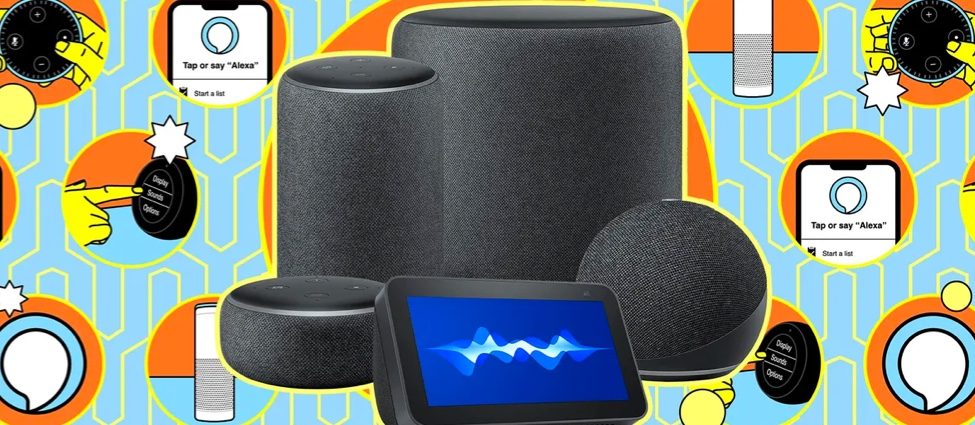Alexa’s APL widgets revolutionize interactive experience
Amazon Alexa’s new APL (Alexa Presentation Language) widgets are an exciting development for developers looking to create engaging and interactive experiences on Alexa-enabled devices. In this blog post, we’ll take a deep dive into APL widgets and explore their features, benefits, and potential use cases.
What are APL widgets?
APL widgets are custom, interactive visual components that can be easily incorporated into Alexa skills. These widgets allow developers to create dynamic visual components that can respond to user input, display real-time data, and more.
Previously, developers were limited to creating simple, static visuals that were displayed alongside Alexa’s voice responses. However, with the introduction of APL widgets, developers can now create dynamic visual components that can enhance the user experience and make Alexa skills more engaging.
Creating APL widgets
APL widgets are created using a combination of HTML, CSS, and JavaScript, making it easy for developers who are familiar with web development to create custom widgets for their skills. These widgets can be used to display images, text, and even video, making it easy to create engaging and interactive experiences for users.
To create an APL widget, developers can use the APL authoring tool in the Alexa Developer Console. This tool provides a drag-and-drop interface for creating custom layouts, adding interactive components, and previewing the widget on different devices.
Custom layouts
One of the most exciting aspects of APL widgets is the ability to create custom layouts for different devices. With support for a wide range of screen sizes and resolutions, developers can create unique experiences for devices such as the Echo Show, Echo Spot, and Fire TV.
This means that developers can tailor their visual components to the specific device, ensuring that users have the best possible experience. For example, a developer could create a custom layout for the Echo Show that takes advantage of its larger screen size and allows for more complex interactions.
Responsive design
In addition to custom layouts, APL widgets also support responsive design, allowing developers to create widgets that adjust to different screen sizes and orientations. This makes it easy to create visual components that work seamlessly across a range of devices, from small smart speakers to large smart TVs.
Responsive design is achieved through the use of dynamic sizing and positioning. Developers can use relative measurements, such as percentages or ratios, to ensure that their widgets look good on any screen size.
Animations
Finally, APL widgets also support animations, allowing developers to create dynamic visual effects that respond to user input. This opens up a whole new world of possibilities for creating engaging, interactive experiences on Alexa-enabled devices.
Developers can use CSS animations, JavaScript animations, or a combination of both to create custom animations for their widgets. These animations can be triggered by user input, device events, or even real-time data.
Benefits of using APL widgets
There are several benefits to using APL widgets in your Alexa skills. Let’s take a look at some of them:
Enhanced user experience – APL widgets allow you to create engaging and interactive visual components that enhance the user experience and make your skills more enjoyable to use.
Customization – With support for custom layouts and responsive design, you can tailor your widgets to specific devices and ensure that they look great on any screen size.
Interactivity – APL widgets can respond to user input, allowing you to create interactive experiences that go beyond simple voice interactions.
Real-time data – APL widgets can display real-time data, such as weather forecasts, stock prices, or sports scores, making your skills more useful and informative.
Branding – APL widgets allow you to incorporate your brand’s visual identity into your skills, helping to reinforce your brand and create a consistent user experience.
Use cases for APL widgets
There are many potential use cases for APL widgets in Alexa skills. Let’s explore some of them:
Education – APL widgets can be used to create interactive educational experiences on Alexa-enabled devices. For example, a language learning skill could use APL widgets to display images and text related to vocabulary words, and allow users to interact with the content.
Entertainment – APL widgets can be used to create engaging and interactive games on Alexa-enabled devices. For example, a trivia game skill could use APL widgets to display questions and answers, and allow users to select their answers using visual components.
Health and fitness – APL widgets can be used to create interactive workout routines on Alexa-enabled devices. For example, a yoga skill could use APL widgets to display images and instructions for different yoga poses, and allow users to interact with the content
News and information – APL widgets can be used to display real-time data, such as weather forecasts or news headlines, on Alexa-enabled devices. For example, a news skill could use APL widgets to display headlines and allow users to select articles to read.
Shopping – APL widgets can be used to create interactive shopping experiences on Alexa-enabled devices. For example, an e-commerce skill could use APL widgets to display product images and descriptions, and allow users to add items to their cart using visual components.
Conclusion
APL widgets are an exciting development for developers looking to create engaging and interactive experiences on Alexa-enabled devices. With support for custom layouts, responsive design, animations, and real-time data, APL widgets offer a range of benefits and potential use cases.
If you’re a developer looking to create visual components for your Alexa skills, APL widgets are definitely worth exploring. With the APL authoring tool in the Alexa Developer Console, it’s easy to get started and create custom widgets that enhance the user experience and make your skills more engaging.




